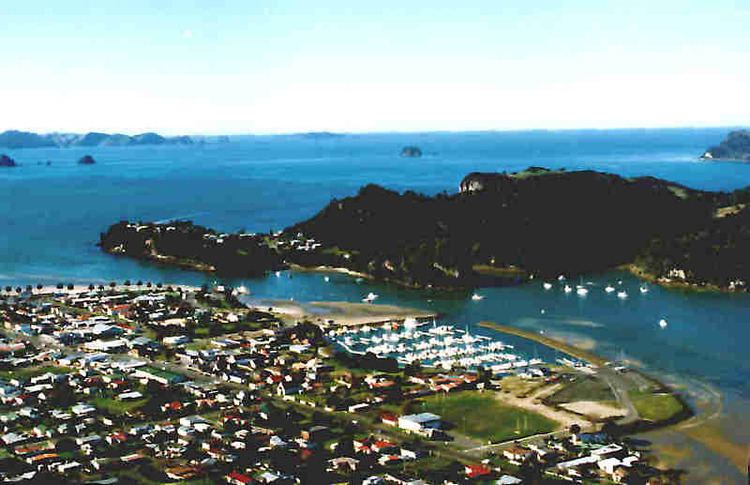 | ||
Mercury Bay is a large V-shaped bay on the eastern coast of the Coromandel Peninsula on the North Island of New Zealand. This bay was named by the English navigator Captain James Cook during his exploratory expeditions. By the Māori it was named Te-Whanganui-o-Hei, the great bay of Hei.
Map of Mercury Bay, New Zealand
On 9 November 1769, Cook landed on the shores of this bay to observe a Transit of Mercury. In 1919, an area of land around Shakespeare Cliff was set aside, and a small memorial was constructed, based on the erroneous notion that it was the location of Cook's observations. But the actual site of Cook's landing and observation was the eastern end of Cook's Beach, near the Purangi estuary. A smaller memorial plinth was established there also.
The mouth of Mercury Bay is ten kilometres across, and its coastline extends some 20 km. On the shore of this bay is the resort town of Whitianga, and a natural harbour is formed by an arm of the bay which extends inland a further six kilometres southward. Several small islets are located at the southern and northern extremities of the bay, and the Mercury Islands are 10 km to the north.
Named locations along Mercury Bay include Buffalo Beach, Wharekaho, Ferry Landing, Shakespeare Cliff, Lonely Bay, Flaxmill Bay, Cooks Beach, Purangi Estuary, Cathedral Cove, Hahei, and Hot Water Beach.
Mercury Bay is a great location for game fishing, with the Mercury Bay Game Fishing Club being one of the largest in New Zealand. With the nearby presence of the Te Whanganui-A-Hei (Cathedral Cove) Marine Reserve, large varieties of species can be found in the area.
The bay is also widely known for its yachting. The Mercury Bay Boating Club in Whitianga was the challenging club in New Zealand's first challenge for the America's Cup, in 1987.
